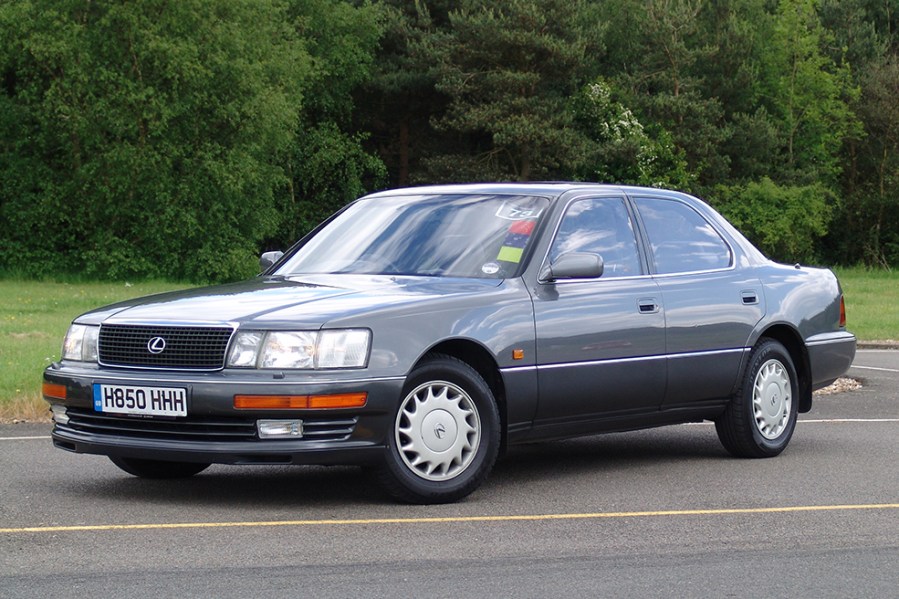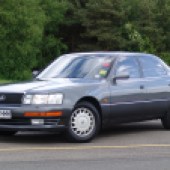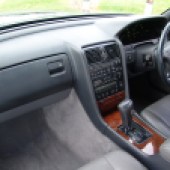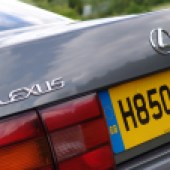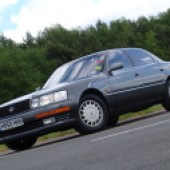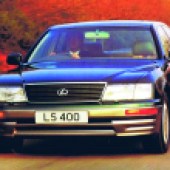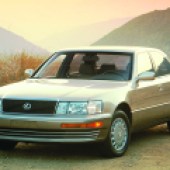The original Lexus LS400 gave Jaguar sleepless nights and even had BMW and Mercedes on the run. Here’s how to buy a great example
Sponsored editorial in association with Lancaster Insurance
Some cars earn their modern classic stripes far quicker than others – often because they’re robust enough to remain in daily use. Sadly, few Jaguars fall into that category, but plenty of early ’90s Mercedes and BMWs still cruise quietly under the radar. Even more anonymous – yet arguably more important to the evolution of today’s prestige landscape – is the Lexus LS400: the first of a new breed of ruthlessly competent cars from Toyota, aimed squarely at disrupting the luxury segment.
The name says it all. According to Toyota insiders, Lexus is a contraction of “Luxury EXecutive for the US”, highlighting that the real motivation behind the project was the vast potential of the North American market.
The Lexus story began as early as 1983, when Toyota chairman Eiji Toyoda tasked his engineers with developing a luxury car to rival the world’s best. Just two years later, prototypes for what was codenamed Project F1 were already running – the entire venture shrouded in secrecy.
Unusually for a company known for rapid model turnover, Toyota insisted this car should deliver long-term ownership satisfaction. The goal? A Lexus with 50,000 miles on the clock should feel no different to drive than a brand-new example.
To get there, Toyota engineers studied how paint, plastics, rubber and upholstery aged over time, alongside wear, vibration and noise in mechanical components – even down to squeaks and rattles.
A bespoke factory was built to assemble the car, and the public got its first glimpse at the 1988 Detroit Motor Show. Badged LS400 – Luxury Saloon, 4.0-litre – it was tailored for the American market: a traditional front-engined, rear-wheel drive saloon in the full-size executive mould.
But beneath the surface, it was leagues ahead. The all-aluminium 1UZ-FE V8 was unlike anything from Detroit: featuring iron cylinder liners, quad cams and 32 valves, with lightweight aluminium followers to reduce valvetrain inertia. Machining tolerances were halved in the name of refinement, while hydro-pneumatic engine mounts kept unwanted vibrations at bay. It all made possible that famous advert: a pyramid of champagne glasses balanced on a running engine.
Power was delivered via a specially developed, electronically controlled four-speed auto, with fully independent suspension all round. Double wishbones and twin-tube dampers featured at each corner, along with fluid-filled bushes and a newly developed high-mounted upper arm for sharper response.
To further enhance smoothness, the engine and gearbox ECUs communicated to momentarily retard ignition timing during gearshifts – a technique now common, but groundbreaking in the late ’80s. Hydraulic systems also helped modulate torque to reduce stress on internal clutches.
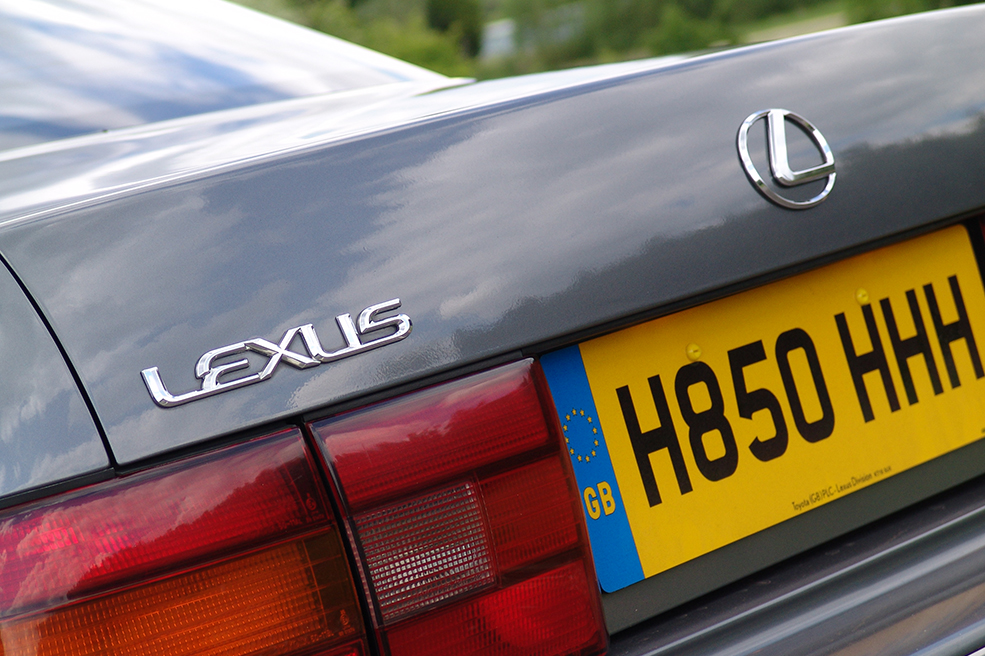
At the rear, a bespoke differential was built with 30% more teeth than conventional designs, and manufactured with one-third tighter tolerances. Unsurprisingly, you don’t hear the tell-tale whine of a worn-out Jag axle in an LS400.
Deliveries to American customers began in September 1989, with 4200 cars sold before Lexus even arrived in Europe. UK uptake was slower – only 1158 sold in year one – but rival manufacturers quickly grasped the scale of Toyota’s achievement.
Publicly, they dismissed it as a floaty Toyota aimed at Yanks. Behind closed doors? Crisis meetings in Stuttgart and Munich. In Coventry? Sheer panic. Lexus clearly wasn’t going away – and if this was their first go, the next attempt would be even more serious. Right on cue, the GS300 followed in 1993, with the smaller IS200 joining in 1999 to take on the BMW 3-Series. Today, Lexus might not match BMW for volume, but it’s firmly cemented as a premium brand – particularly in the US.
Back in Britain, Lexus took time to gain traction, but the LS400 found favour with buyers seeking discreet luxury – less flash than a 7-Series or S-Class. The word soon spread: near-flawless reliability and outstanding dealer service sealed the deal.
After all, 450 development cars had racked up 4.4 million kilometres of testing, so the LS400 was well-honed even before launch. That said, a 1992 facelift tackled the few gripes reviewers raised: larger wheels and brakes, revised suspension and steering for better feel, and a passenger airbag. Outside, it gained new side cladding and a refreshed grille.
Production of the original ‘XF10’ generation ended in September 1994, succeeded by a heavily updated second-generation LS400 – officially “almost entirely new” according to Lexus.
Sales climbed steadily as the brand earned its place alongside the old-money marques, making the original LS400 a pivotal, if understated, automotive milestone.
Lexus LS400 values
The Lexus LS400 is fast becoming a sought-after modern classic. Project cars needing light recommissioning can still be found for £1500-£3000, often mechanically sound but cosmetically tired. Usable examples with MOT and decent history typically fetch £4000-£6500, offering superb value for the refinement and reliability. Top-condition, low-mileage cars with full service history are now reaching £8000-£10,000, especially post-facelift models. With rising interest and bulletproof engineering, the LS400 is no longer just a quirky choice – it’s a solid investment for enthusiasts looking for understated luxury with long-term appeal.
Insurance Costs
1998 Lexus LS400, £6000 value.
Example quote: £150.30 or £168.30 with Agreed Value.Quotation supplied by Lancaster Insurance. Tel: 01480 400761
Quote based on a 45-year-old marketing manager, access to another car, no claims or convictions, club member, 3000 miles per year, no modifications, living in SP2 0HL. Disclaimer: Subject to underwriting criteria. An additional charge may be payable. Authorised and regulated by the Financial Conduct Authority.
Bodywork
Lexus earned a reputation for the precision of its panel gaps – a benchmark for build quality. Any inconsistencies around the car may indicate previous body repairs. However, there is one exception: the gap between the bonnet and wings is deliberately wider at the trailing edge than at the front. This is a clever optical illusion – designed so the gap appears uniform when viewed head-on.
The LS400’s bodywork is generally well protected against rust, and it’s uncommon to come across a seriously corroded example. That said, it’s still worth inspecting the edges of panels and the wheelarches, as rot can occasionally take hold. A more frequent cosmetic issue is peeling lacquer on the alloy wheels – a known weak point, but one that’s easily sorted and shouldn’t put you off.
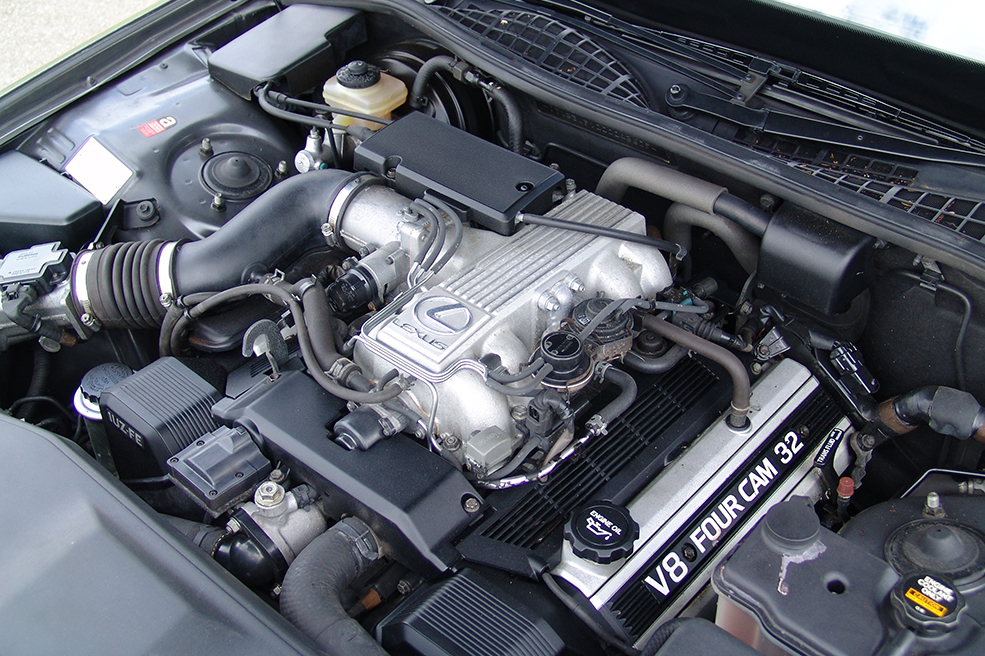
Engine and transmission
The 1UZ-FE engine has a well-earned reputation for bulletproof reliability, meaning common issues are few and far between. One notable quirk, however, is the location of the power steering pump – mounted directly above the alternator. If the pump starts to leak, which isn’t unheard of, it can result in both the PAS pump and alternator needing replacement. It’s not a particularly complex task, but it is time-consuming due to tight access and the unit being buried deep within the engine’s V. Starter motor failures also crop up from time to time, so many owners take the opportunity to replace it at the same time, as it lives directly beneath the alternator. While you’re in there, it’s also wise to check the steel EGR pipe at the rear of the engine – these are prone to cracking, so replacing it as a precaution can save future grief.
Elsewhere, timing belts need to be replaced every 60,000 miles, and it’s good practice to do the water pump at the same time. While some experienced owners have tackled this job at home, it’s a fiddly and involved process – not ideal for your first foray into cam belt replacement.
The original exhaust system used stainless steel pipework, but with mild steel flanges welded in – and unsurprisingly, these can rust over time. Genuine Lexus replacements are available, though expensive, so many opt for a custom stainless system to avoid the problem entirely.
Officially, the service schedule calls for an annual transmission fluid and filter change. In reality, with most cars now covering far fewer miles, this doesn’t need to be done quite so often – just make sure there’s evidence of regular maintenance. As with any automatic, shifts should be smooth, the fluid should be clean, and there should be no flaring during upchanges.
Suspension, steering and brakes
Clonking noises are never a good sign on these, as the suspension uses complex bushes that are pricey to replace if bought from Lexus. Owners also report that some of the cheapest aftermarket options can be poor in quality – undermining the refinement that makes a Lexus so appealing in the first place. Typical culprits for suspension noise include anti-roll bar links and the strut rod bushes, which can clonk under light braking and cause the car to wander at motorway speeds.
Electronically-controlled air suspension was offered as an option on UK-spec cars, but it’s rare – though some of the vehicles brought over for Toyota management did feature it. Unsurprisingly, issues can be fiddly and expensive to rectify, largely due to limited familiarity among most mechanics.
A slightly unusual advisory from Lexus themselves is to watch out for rear brake discs and pads that have been damaged by someone driving with the parking brake partially engaged. It’s applied using a foot pedal and released via a hand-operated lever – a setup which can catch drivers out if the release isn’t fully disengaged.
Otherwise, most braking issues are fairly easy to spot: a sticking caliper will cause the car to pull under braking, and the condition of discs and pads is easy enough to check visually. Make sure the ABS warning light illuminates with the ignition and extinguishes once the engine is running.
One part that’s now unavailable is the brake back plate. So, if you’re working on the brakes and yours are looking a bit scruffy, give them a clean and a coat of paint to help preserve them.
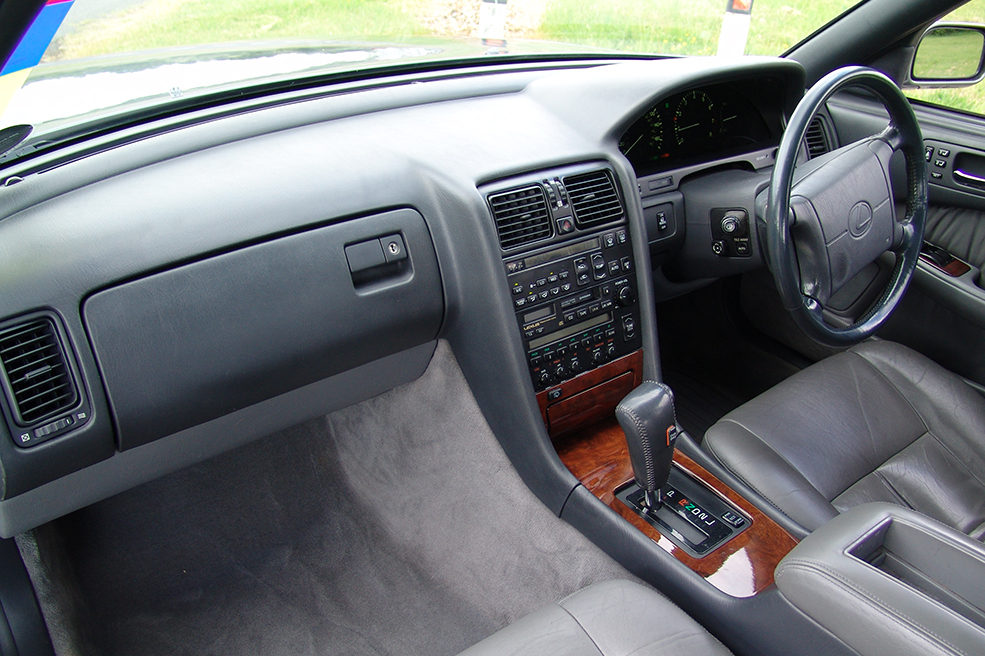
Interior and trim
Despite Lexus’s considerable effort in selecting interior materials with anti-ageing qualities, it has been reported that the leather used in the LS400 doesn’t seem to endure as well as that found in comparable German models, though this does tend to vary from vehicle to vehicle depending on usage. Generally speaking, it’s straightforward to smarten up a tired interior with a leather refurbishment and colouring kit.
Like many prestige cars of this period, the digital display on the climate control panel is prone to failure. It can be repaired by a specialist or, if you’re confident with a soldering iron – and you do need to be quite skilled, as it’s a delicate job – you can purchase a replacement LCD screen for around £30 and fit it to the circuit board yourself.
The wiring loom is complex but typically well made, with issues being minor unless the system has been tampered with. One known problem is the tendency for the capacitors in the ECU to fail and eventually leak as they age – this is worsened by over-current from a faulty alternator. General wear and tear may dull the car’s performance, but leaking capacitors can ruin the ECU circuit board entirely. Again, this is a skilled soldering task, but kits are available to replace the components, with owners reporting a significant boost in performance. Alternatively, the ECU can be sent off for professional repair.
Lexus LS400: our verdict
As a modern classic, the LS400 may not have the striking looks of a Jaguar, but its renowned reliability makes it an extremely practical choice. If you’re after a more unconventional take on the large luxury V8 saloon, it’s difficult to find a better option.
There’s also the relative ease of ownership to bear in mind. We spoke to Toyota GB, whose comments suggest these cars are better supported than many modern classics: “Toyota/Lexus commits to having parts available for a minimum of 10 years from when the last vehicle is built. Of course, parts are often shared across models. This definition covers when the part was last used on a new car, so in some cases a part may remain available for up to 20 years if it’s used in other models that continue in production.”

